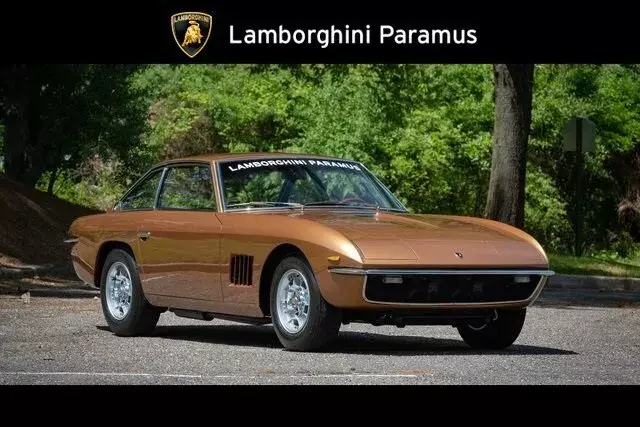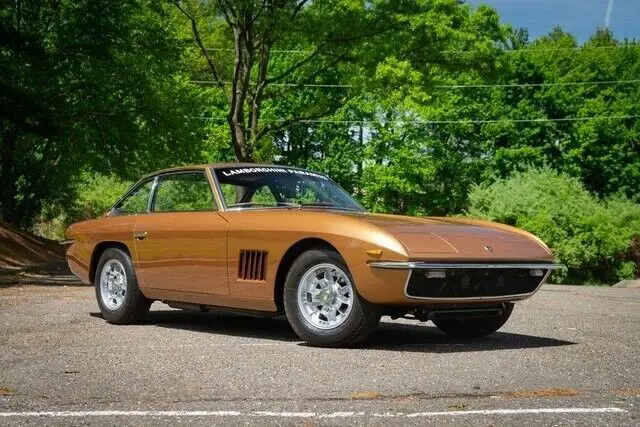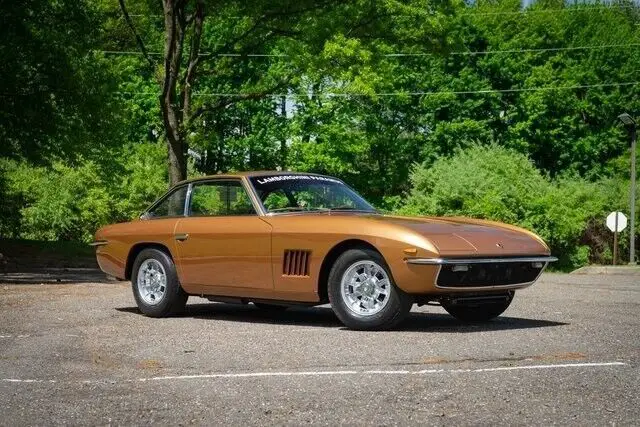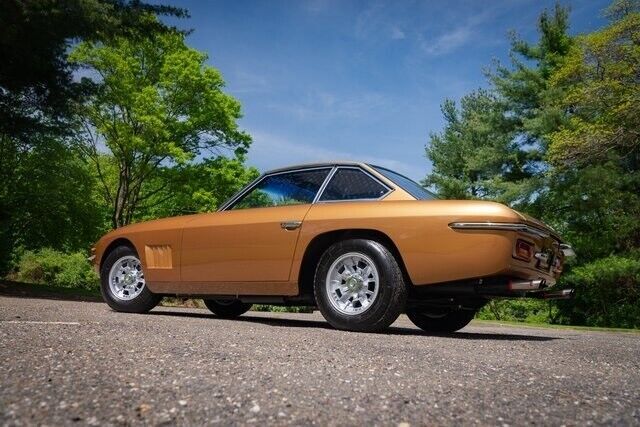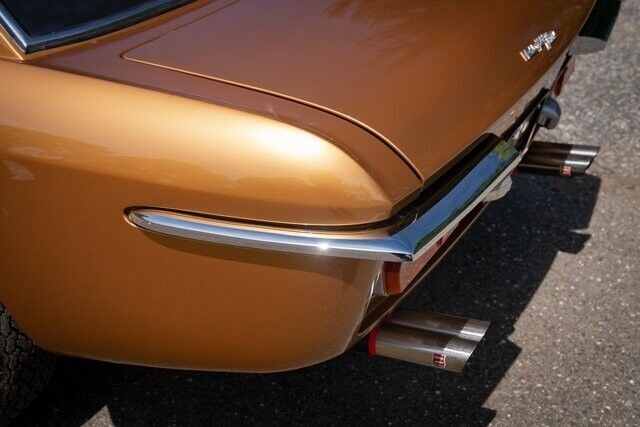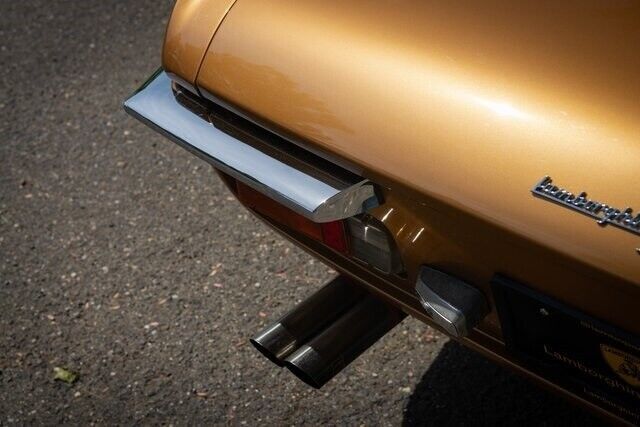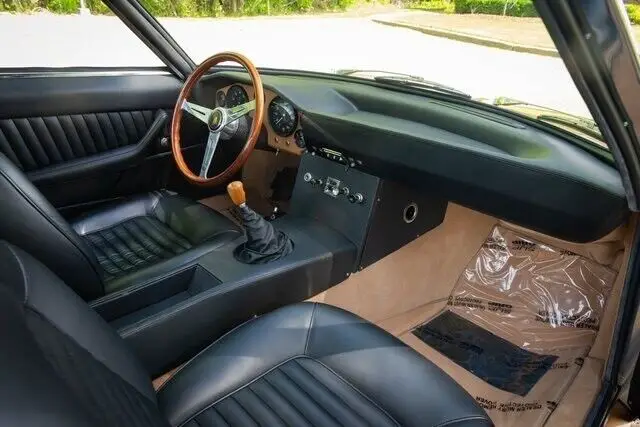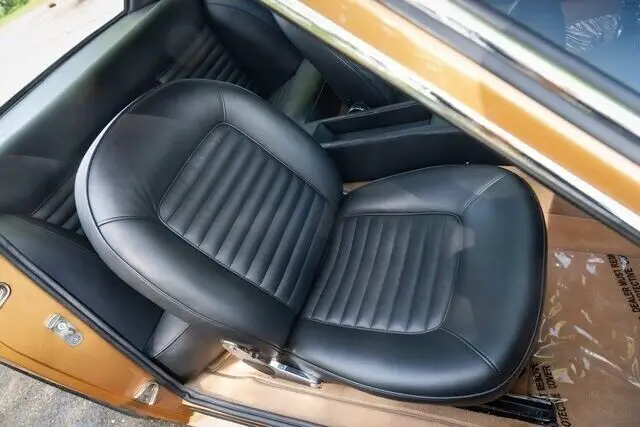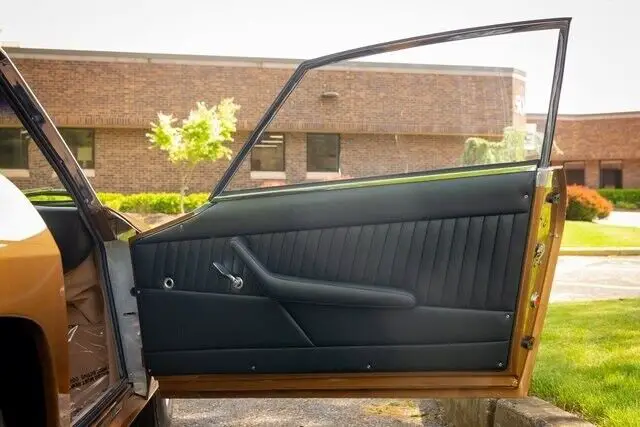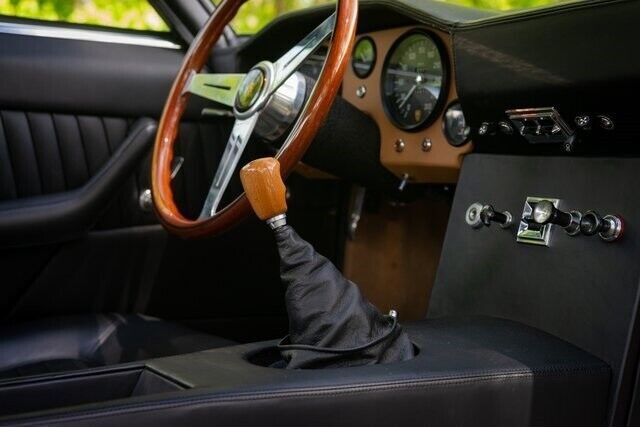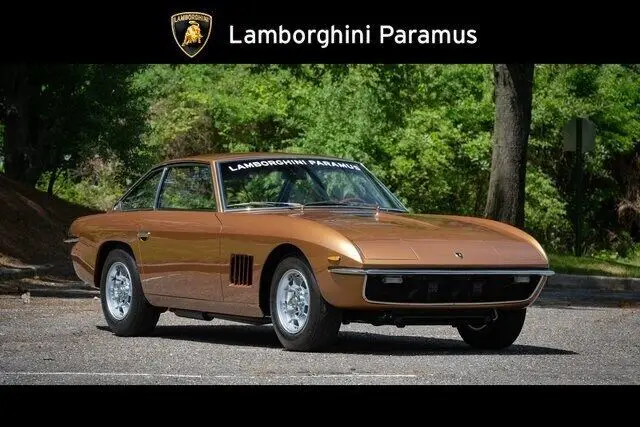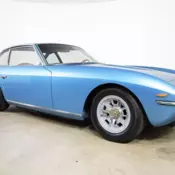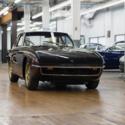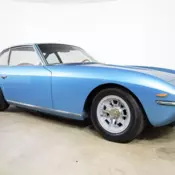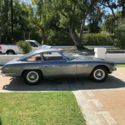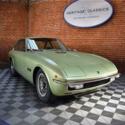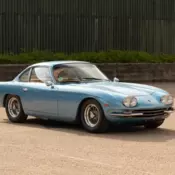1968 Lamborghini Islero 400GT 2+2 24909 Miles Bronze Coupe 3,939cc DOHC V12 5-Sp
| Make: | Lamborghini |
| Model: | Islero |
| Type: | Coupe |
| Trim: | 400GT 2+2 |
| Year: | 1968 |
| Mileage: | 24909 |
| VIN: | 400GTX6012X |
| Color: | Bronze |
| Engine: | 3,939cc DOHC V12 |
| Fuel: | Gasoline |
| Transmission: | Manual |
| Drive type: | -- |
| Interior color: | Black |
| Vehicle Title: | -- |
1968 Lamborghini Islero 400GT 2+2 Additional Info:
CHASSIS NO. 6012ENGINE NO. 184824,909 km (15,477 miles)3,939cc DOHC V126 Weber Carburetors325bhp at 7,000rpm5-Speed Manual Transaxle4-Wheel Independent Suspension4-Wheel Hydraulic Disc Brakes*The 5th of Only 125 Isleros built*Unique characteristics present on only the earliest examples*Exquisitely restored from top to bottom in striking period color*Excellent candidate for the finest Concours events*Rare Evolution of Lamborghini's Classic 1960s Grand TourerLaunched at the Geneva Salon in 1968, the Islero was the ultimate evolution of Ferruccio Lamborghini's first model, the Touring-styled 350GT. It is widely believed that Ferruccio Lamborghini himself greatly influenced the car's styling, and it was generally considered one of his favorite creations. The Islero was Ferruccios choice of daily driver and the company car which he maintained. The Islero's square-tube chassis was based on that of its predecessors, though with a wider track to accommodate wider tires. Since Lamborghini's go-to coachbuilder, Carrozzeria Touring, was no longer in business, Lamborghini commissioned ex-Touring personnel led by Mario Marazzi to design and build the elegantly understated coachwork which was new for the model. The model was named after the legendary bull that killed Spain's best matador, 'Manolete'.As with the 400 GT, housed beneath an impressively low-slung bonnet was the sonorous 4.0 liter V12 providing the power. The engine was designed by Giotto Bizzarrini and finessed by Giampaolo Dallara. This four-cam engine sported six Weber carbs and could spin up to 7,000 rpm. It was rated at 325 horsepower, and a five-speed manual transmission was standard. The suspension was fully independent, with unequal-length A-arms and coil springs at all four corners and Girling disc brakes clamped all four wheels. Contemporary reviews reported excellent handling and grip. The Islero offered virtually all the performance of a Miura in a far more civilized package.Car magazine's test Islero achieved a true 157mph back in 1969, proving to be as quiet and stable at its maximum as at 130mph. It was also startlingly quick off the mark, hitting 60mph in just 5.9 seconds and hurtling to 100mph in only 13.7 seconds, outstanding figures even today. Despite an impeccable pedigree, the Islero, 125 of which were manufactured between 1968 and 1969, is today one of the most overlooked of Lamborghini's early front-engined cars. The first Islero was completed by the factory March 6, 1968 and all the rest of the first series were finished by Christmas except for one car which was finished on February 17, 1969.This outstanding example is one of the finest Isleros that has been brought to market in recent years. Islero production began with Chassis number 6000, which was the prototype, more commonly referred to at the prototipo. Each example after the prototype was counted by 3's, making chassis number 6012 only the 5th Islero to leave the factory. Cars early on in the production run are noted to have unique characteristics before the final production procedures were put into place. One of the most desirable features of the first 17 cars were the Borrani wire wheels that they were fitted with, matching the Islero that appeared at the Geneva Salon and in the company's brochure. The remaining 108 cars wore the commonly seen production Campagnolo cast magnesium wheels. Number 6012 also wears unique side vents in the front fenders, as noted in the online Islero database.In the early 2010s, the car was sent to Italy where it received a multi-year, nut-and-bolt, rotisserie restoration. Every inch of the car has been restored to better than new condition. The exterior is finished in a beautiful and period shade of metallic bronze - the finish is absolutely incredible. Every fiber of the interior has been replaced with the highest quality materials. The supple black leather sea
CHASSIS NO. 6012
ENGINE NO. 1848
24,909 km (15,477 miles)
3,939cc DOHC V12
6 Weber Carburetors
325bhp at 7,000rpm
5-Speed Manual Transaxle
4-Wheel Independent Suspension
4-Wheel Hydraulic Disc Brakes
*The 5th of Only 125 Isleros built
*Unique characteristics present on only the earliest examples
*Exquisitely restored from top to bottom in striking period color
*Excellent candidate for the finest Concours events
*Rare Evolution of Lamborghini's Classic 1960s Grand Tourer
Launched at the Geneva Salon in 1968, the Islero was the ultimate evolution of Ferruccio Lamborghini's first model, the Touring-styled 350GT. It is widely believed that Ferruccio Lamborghini himself greatly influenced the car's styling, and it was generally considered one of his favorite creations. The Islero was Ferruccios choice of daily driver and the company car which he maintained. The Islero's square-tube chassis was based on that of its predecessors, though with a wider track to accommodate wider tires. Since Lamborghini's go-to coachbuilder, Carrozzeria Touring, was no longer in business, Lamborghini commissioned ex-Touring personnel led by Mario Marazzi to design and build the elegantly understated coachwork which was new for the model. The model was named after the legendary bull that killed Spain's best matador, 'Manolete'.
As with the 400 GT, housed beneath an impressively low-slung bonnet was the sonorous 4.0 liter V12 providing the power. The engine was designed by Giotto Bizzarrini and finessed by Giampaolo Dallara. This four-cam engine sported six Weber carbs and could spin up to 7,000 rpm. It was rated at 325 horsepower, and a five-speed manual transmission was standard. The suspension was fully independent, with unequal-length A-arms and coil springs at all four corners and Girling disc brakes clamped all four wheels. Contemporary reviews reported excellent handling and grip. The Islero offered virtually all the performance of a Miura in a far more civilized package.
Car magazine's test Islero achieved a true 157mph back in 1969, proving to be as quiet and stable at its maximum as at 130mph. It was also startlingly quick off the mark, hitting 60mph in just 5.9 seconds and hurtling to 100mph in only 13.7 seconds, outstanding figures even today. Despite an impeccable pedigree, the Islero, 125 of which were manufactured between 1968 and 1969, is today one of the most overlooked of Lamborghini's early front-engined cars. The first Islero was completed by the factory March 6, 1968 and all the rest of the first series were finished by Christmas except for one car which was finished on February 17, 1969.
This outstanding example is one of the finest Isleros that has been brought to market in recent years. Islero production began with Chassis number 6000, which was the prototype, more commonly referred to at the prototipo. Each example after the prototype was counted by 3's, making chassis number 6012 only the 5th Islero to leave the factory. Cars early on in the production run are noted to have unique characteristics before the final production procedures were put into place. One of the most desirable features of the first 17 cars were the Borrani wire wheels that they were fitted with, matching the Islero that appeared at the Geneva Salon and in the company's brochure. The remaining 108 cars wore the commonly seen production Campagnolo cast magnesium wheels. Number 6012 also wears unique side vents in the front fenders, as noted in the online Islero database.
In the early 2010s, the car was sent to Italy where it received a multi-year, nut-and-bolt, rotisserie restoration. Every inch of the car has been restored to better than new condition. The exterior is finished in a beautiful and period shade of metallic bronze - the finish is absolutely incredible. Every fiber of the interior has been replaced with the highest quality materials. The supple black leather sea
